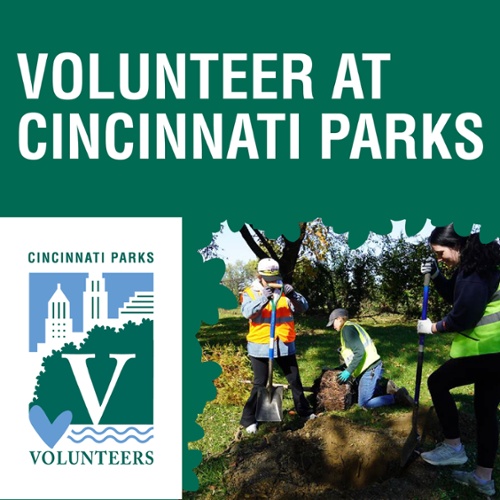Parks as Pollinator Protectors
Aside from being one of the nation’s top urban park systems, Cincinnati Parks also has a number of pollinator gardens that help maintain and sustain the presence of pollinators in our parks. The diversity of trees, flowers and other plants in our parks support many different kinds of pollinators.
Why are pollinators so important?
Pollinators are essential to our ecosystem. Over 75% of the world’s flowering plants and 35% of the world’s crops rely on pollinators. One out of every three bites of food you eat is there because of pollinators They not only are essential for our food production, but also support healthy ecosystems.
Check out the following list of some well-known pollinator gardens in our Cincinnati Parks.
Ault Park Rose Garden – This rose garden is home to bees, wasps, hornets and butterflies. Roses are known for attracting pollinators due to their colorful petals and their strong fragrance.
French Park Meadows/Prairies – Near the exit of French Park is an unmowed meadow that was planted with prairie seeds by Girl Scouts in the early 2000’s. Here you can find False Sunflowers, Joe-Pye Weed, Cut Plant, Common Milkweed and others, all of which attract and support pollinators.
Smale Riverfront Park – Here you can find many prairie plantings. These include False Sunflowers, which are reliable and tough, Joe-Pye Weed, which blooms from summer to fall and supports many pollinators, Common Milk-Weed, which monarch butterflies rely on, and Iron Weed, which is a bright purple plant that blooms late in the season.
Washington Park – The pollinator gardens here have majority native plantings that are important species for pollinators. Some of these plants include Bee Balm, Purple Coneflower, Butterfly Weed, Blazing Star, Prairie Dropseed, Culver's Root, Foxglove Beardtoungue, Black-eyed Susan, and Joe-pye Weed.
Pollinator species have declined in numbers, become endangered or even gone extinct due to the loss of natural food supplies and habitat. Parks, as pillars in our communities, are vital in maintaining these habitats for pollinators. Luckily, Cincinnati Parks has not seen a decline in pollinators, and it is thanks to parks staff that maintains these pollinator gardens. We are happy that our parks allow these pollinators to continue to thrive, and we hope that everyone gets a chance to check out our pollinator gardens to see these amazing species at work. If you want to help, consider planting a pollinator garden where you live.



